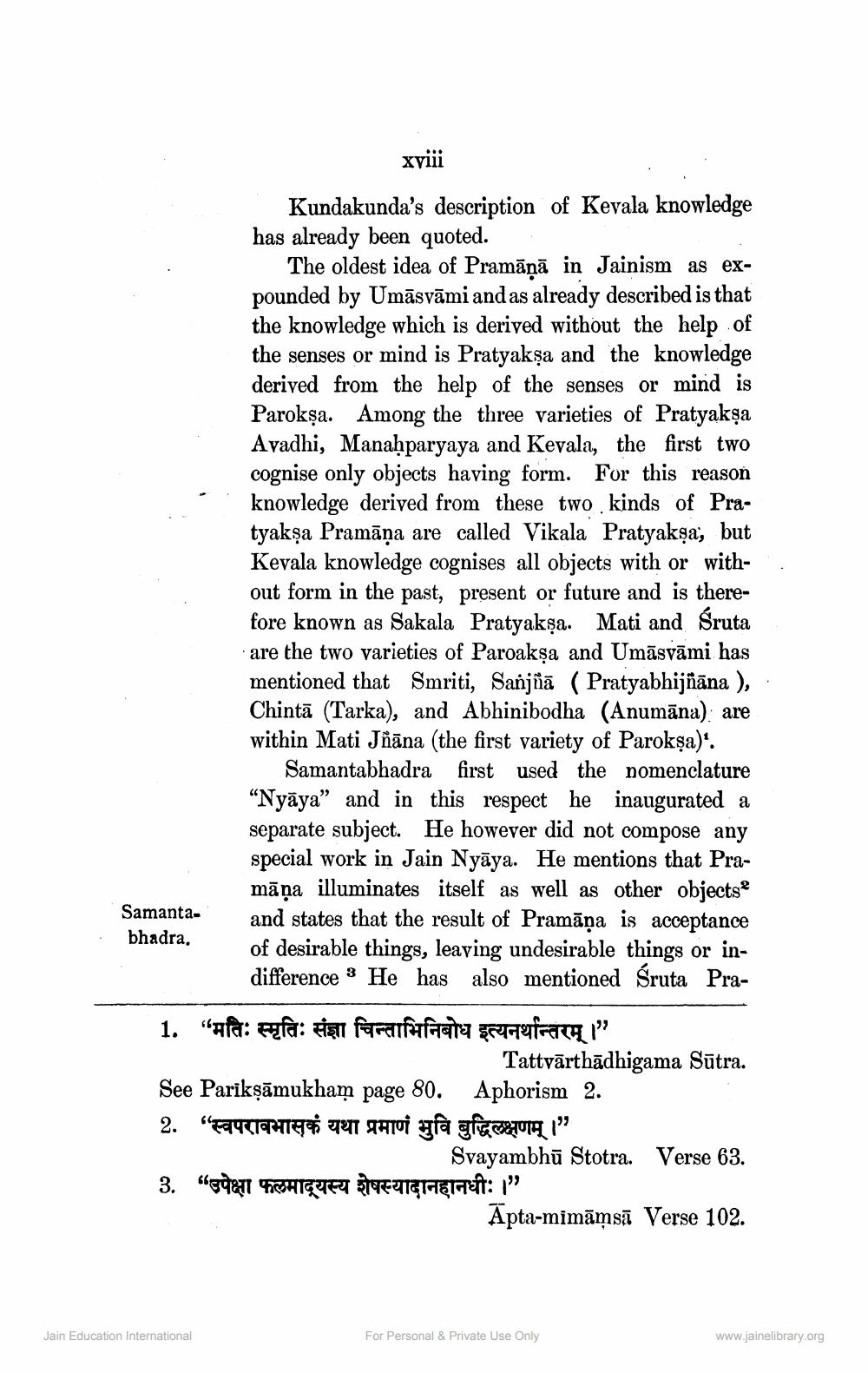________________
Samantabhadra.
xviii
Kundakunda's description of Kevala knowledge has already been quoted.
The oldest idea of Pramāņā in Jainism as expounded by Umāsvāmi and as already described is that the knowledge which is derived without the help of the senses or mind is Pratyakṣa and the knowledge derived from the help of the senses or mind is Parokṣa. Among the three varieties of Pratyakṣa Avadhi, Manaḥparyaya and Kevala, the first two cognise only objects having form. For this reason knowledge derived from these two kinds of Pratyakṣa Pramāņa are called Vikala Pratyakṣa, but Kevala knowledge cognises all objects with or without form in the past, present or future and is therefore known as Sakala Pratyakṣa. Mati and Śruta are the two varieties of Paroakṣa and Umāsvāmi has mentioned that Smriti, Sanjña (Pratyabhijñāna), Chinta (Tarka), and Abhinibodha (Anumana) are within Mati Jñana (the first variety of Parokşa)'.
Jain Education International
Samantabhadra first used the nomenclature "Nyaya" and in this respect he inaugurated a separate subject. He however did not compose any special work in Jain Nyaya. He mentions that Pramāņa illuminates itself as well as other objects and states that the result of Pramana is acceptance of desirable things, leaving undesirable things or indifference He has also mentioned Śruta Pra
1. “मतिः स्मृति: संज्ञा चिन्ताभिनिबोध इत्यनर्थान्तरम् ।”
Tattvarthadhigama Sūtra. See Parikṣāmukham page 80. Aphorism 2. 2. “स्वपरावभासकं यथा प्रमाणं भुवि बुद्धिलक्षणम् ।"
Svayambhu Stotra. Verse 63.
3. " उपेक्षा फलमादूयस्य शेषस्यादानहानधीः ।"
Apta-mimāmsā Verse 102.
For Personal & Private Use Only
www.jainelibrary.org




